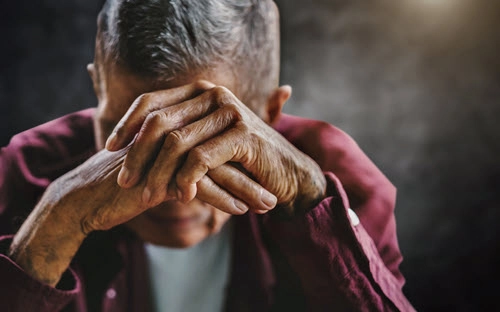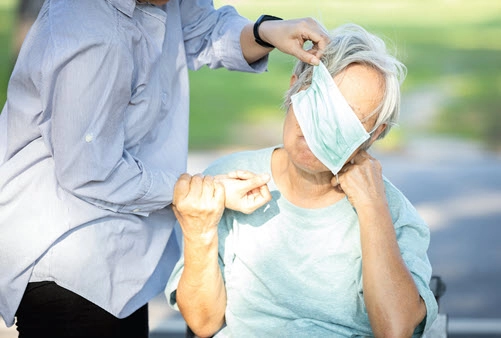Practice Management Alert
Watch out for Elder Abuse
Know which signs and symptoms may not be obvious.
Regardless of your practice’s specialty, there’s a good chance your staff, including clinicians, will see elderly patients. Arm yourself with the knowledge necessary to notice signs and symptoms of abuse and neglect — and understand your responsibility to report it, which in some states is legally mandated.
“Until recently, physicians appeared to play a very minor role in detection and reporting of cases of elder abuse, in contrast with child abuse, where pediatricians had and continue to have a major role in detection, intervention, research, reporting, and development of creative model programs for combating the problem,” said James G. O’Brien, MD, in “Elder Abuse and its Prevention: A Workshop Summary.”
Understand How Abuse May Manifest
Elder abuse is, unfortunately, a widespread issue, but it’s not a well-publicized one. According to the National Institutes of Health (NIH) National Institute on Aging (NIA), types of elder abuse include physical, emotional, sexual, and financial, as well as neglect and abandonment. The myriad types of abuse mean that people in many walks of life, from bank tellers to grocery store clerks to front desk staff at physicians’ offices, may be in a place to help an elderly person who is suffering.

Neglect is generally defined as a caregiver not meeting an individual’s needs, in terms of physical, emotional, or social well-being, or actually withholding food, medication, or healthcare access, NIA says. But O’Brien points out that self-neglect may be one of the more difficult manifestations to notice or treat, and that many states do not actually include it in their legal or medical definitions of abuse and neglect.
Abuse of any kind can happen to anyone, but people who live alone or have no friends or family nearby may be more at risk, as well as people who are frail or live with disabilities, memory problems, or dementia, NIA says. NIA also says that women are more likely to be victimized than men but reiterates that anyone can be targeted.
One especially insidious facet of abuse is healthcare fraud, which NIA describes as instances where clinicians or other healthcare personnel or staff overcharge or bill a patient multiple times or falsify claims for Medicare or Medicaid.
Look for Signs, Symptoms
The signs of abuse can manifest physically or through changes in presentation or mental state. Some signs may mirror depression, like the patient losing interest in activities they used to enjoy, general withdrawal, having trouble sleeping, or presenting with weight loss for no apparent reason. Other signs are more indicative of physical trauma, like bruises, burns, cuts, scars, or fractures; broken eyeglasses; signs of having been physically restrained; or coping behaviors, like rocking back and forth. If the patient is missing medical aids, like their glasses or dentures or hearing aids or a cane or walker, that may be another sign.

Signs of financial abuse may not be as obvious in a healthcare setting, but eviction notices or unpaid rent, or insufficient personal care or unpaid bills may be signs as well.
If You’re Suspicious, Do This
After researchers realized that physicians were often positioned well to notice signs of elder abuse but had markedly low reporting rates, Mark J. Yaffe, MD, CM, MCISc, CCFP, FCFP, and colleagues created a short questionnaire that can be used by physicians as a screening tool. The tool is called the Elder Abuse Suspicion Index (EASI) and consists of five questions physicians can ask patients and one question for the doctor to reflect on and answer personally.
Most U.S. states have reporting requirements for physicians, among other professionals, who suspect elder abuse, which sometimes entails contacting an adult protective services agency. You can find out the requirements for your state here >www.americanbar.org/content/dam/aba/administrative/law_aging/2020-elder-abuse-reporting-chart.pdf?eType=EmailBlastContent&eId =ed64ab8e-28fa-405b-930d-f4d812fb840d.
Historically, research indicates that physicians have low reporting rates for elder abuse. Surveys done by Deborah B. Wagenaar, DO, MS; Rachel Rosenbaum, DO, MS, RD; Connie Page, PhD; and Sandra Herman, PhD, researchers in Michigan, suggest that many clinicians do not have any formal training surrounding elder abuse, and only 12 percent of responding clinicians have more than six hours. Their article, “Primary Care Physicians and Elder Abuse: Current Attitudes and Practices,” published in the Journal of American Osteopathic Association, Vol. 110, notes that a multifaceted educational approach is crucial to helping identify and stop elder abuse, including clinicians pursuing their own means of education through reading literature on the subject and attending engaging continuing medical education (CME) lectures.
You can report abuse by contacting your local or regional adult protective services agency or, if the person may be in immediate danger, the police. To find other appropriate agencies to make a report, the Department of Health and Human Services recommends calling the Eldercare Locator at 1-800-677-1116, where “specially trained operators will refer you to a local agency that can help. The Eldercare Locator is open Monday through Friday, 9 a.m. to 8 p.m. Eastern Time,” the agency says. You can find more information here www.hhs.gov/answers/programs-for-families-and-children/how-do-i-report-elder-abuse/index.html
Practice Management Alert
- Rules and Regulations:
Don’t Miss These Stark Law Updates
CMS cuts administrative burden through a boatload of exceptions. Whispers of changes to Stark Law [...] - Person-Centered Care:
Watch out for Elder Abuse
Know which signs and symptoms may not be obvious. Regardless of your practice’s specialty, there’s [...] - Telehealth Compliance:
Keep on Top of Telehealth Realities During PHE
Hint: You can’t bill for all phone calls to patients. As the pandemic continues, many [...] - Reader Questions:
Understand These Finer Points of MDM
Question: The 2021 office and outpatient evaluation and management (E/M) guidelines for medical decision making [...] - Reader Questions:
Take Heed of AAP Recoupment Strategy
Question: Our practice secured money through the Centers for Medicare & Medicaid Services (CMS) Accelerated [...] - Reader Questions:
Beware Exam Room Air
Question: With the pandemic raging, I am pretty sure we are seeing patients who have [...]

